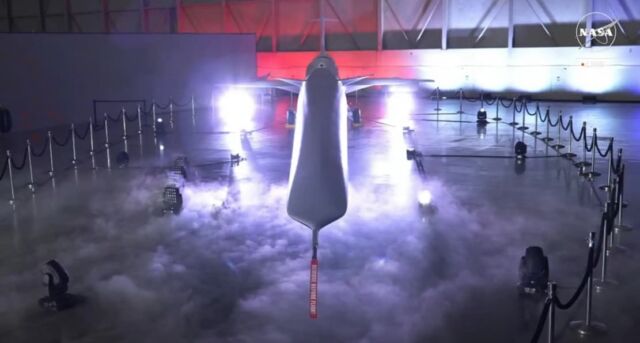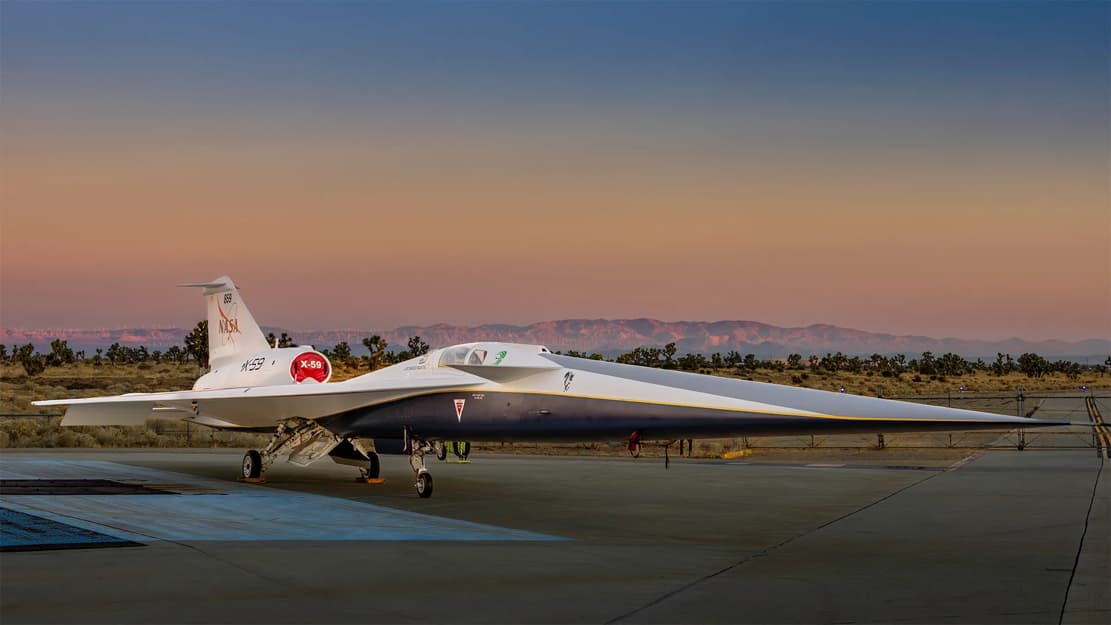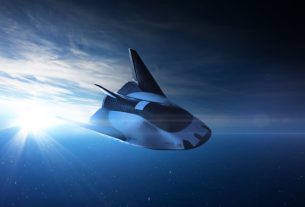[ad_1]
Credit Lockheed Martin Skunk Works
NASA and Lockheed Martin unveiled the agency’s X-59 quiet supersonic aircraft at the Skunk Works facility at dawn in Palmdale, California.
NASA’s Quesst mission centers around the groundbreaking X-59 airplane, aiming to gather data that may lead regulators to reconsider bans on supersonic flights over land.
This experimental aircraft, showcased by Lockheed Martin Skunk Works in California, could revolutionize air travel by enabling a new generation of quieter, faster-than-sound commercial planes.
For half a century, such flights were restricted due to disruptive sonic booms. The X-59, designed to fly at 1.4 times the speed of sound, undergoes final preparations for its maiden flight, including integrated systems testing, engine runs, and taxi testing.

Credit Lockheed Martin
NASA Deputy Administrator Pam Melroy, said:
“This is a major accomplishment made possible only through the hard work and ingenuity from NASA and the entire X-59 team. In just a few short years we’ve gone from an ambitious concept to reality. NASA’s X-59 will help change the way we travel, bringing us closer together in much less time.”
Bob Pearce, associate administrator for aeronautics research at NASA Headquarters in Washington, said:
“It’s thrilling to consider the level of ambition behind Quesst and its potential benefits. NASA will share the data and technology we generate from this one-of-a-kind mission with regulators and with industry. By demonstrating the possibility of quiet commercial supersonic travel over land, we seek to open new commercial markets for U.S. companies and benefit travelers around the world.”
source NASA
[ad_2]



